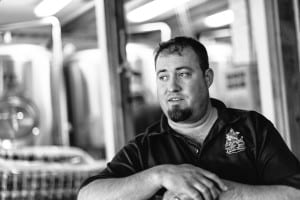As the North Shore battles both the decline in the number of pollinators and the intrusion of invasive plant species, Three Village residents have taken an interest in developing Long Island’s first state forest.
These residents, alongside members of New York State’s Department of Environmental Conservation and the office of state Assemblyman Steve Englebright’s (D-Setauket), gathered in the Setauket Neighborhood House ballroom on Thursday, June 25, to discuss what is next for the new Patriots Hollow State Forest.
Currently, invasive plant species overrun the 518-acre forest. The DEC’s Region 1 Forester John Wernet and Real Property Supervisor Heather Amster acknowledged the state of invasive plants in the forest and said removing all of these plants from the area is not only impossible but also not feasible.
Residents such as conservation biologist Louise Harrison added to the issue of invasive plants saying that establishing a native plant forest is also problematic.
“It’s very difficult to get a native forest to grow from there,” Harrison. “The soils layers have all been mixed together and you don’t have a usual soil profile that supports the right kind of life.”
Black locust trees are among the most invasive species in the area. While some residents suggested this tree served as a food source for pollinators until more native plants are introduced to the area, other residents such as business owners Steve Carolan and Andrew J Heeran said they believed the tree is misunderstood.
Carolan and Heeran both run a saw mill business and said they thought the black locust tree would help develop the forest.
“Black locust is a wonderful wood for establishing infrastructure, especially in outdoor situations,” Heeran said.
Heeran also proposed creating a woodland forest garden, which would provide local produce for consumption. He said that “scarred areas that have so much human impact” have potential to help the community when guided by a vision.
Harrison suggested the community draft and submit a plan for the forest for the DEC to consider and endorse. But Amster said this might not be possible.
The DEC’s mission does not always align with that of the local community, and Amster said she does not want to anger area residents who contributed to drafting a plan, if their plan is not approved.
Although the forum was the fourth and final opportunity for community members to brainstorm ideas for the forest, residents will have the opportunity to comment on the plan before it is finalized.
Currently, there are no safe entries into the forest due to the overgrowth in plants. According to Amster, the forest will not be developed and ready for the public any time soon. However, she said residents do not need to wait until the DEC approves a management plan for the forest to clean up the property.
Wernet said he is not sure how long it will take to clean up the area or how much it would cost to hire workers to remove heavier objects such as fallen trees within the forest.
DEC Commissioner Joe Martens opened Patriots Hollow State Forest on April 22 of this year in honor of New York Gov. Andrew Cuomo’s (D) Earth Week initiative.
The DEC purchased the property using funds it acquired from environmental law and regulation violations that were “slated for the Three Village community’s benefit from the Northville spill fines,” according to Three Village Community Trust President Cynthia Barnes.
According to the DEC, the area also provides timber management, watershed protection and a natural habitat for surrounding wildlife. Patriots Hollow State Forest will provide residents with more recreational opportunities year-round. However, Amster said camping or campfires might not be allowed in the forest once it is open to the public.
The DEC may also allow residents to hunt on the property although bow-hunting restrictions may limit the number of bow-hunters on the property. According to Amster, one bow-hunter at a time may be allowed to hunt on the property. However, this was not finalized.





























